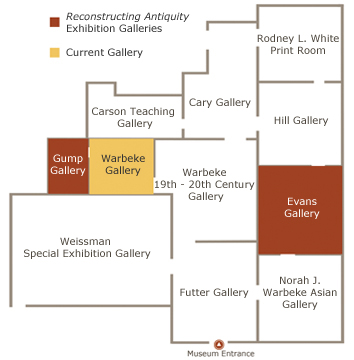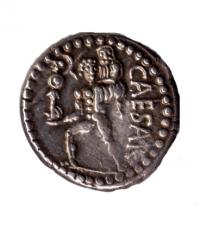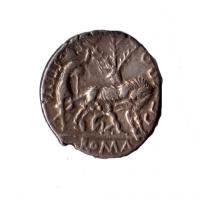Myths and Legends
Learn more about the object below
Roman identity was rooted in the city’s founding myth and its web of legends, tales, and historic events. This blend of history and mythology is evident in a silver denarius (#32) of the Trojan prince Aeneas shown departing war-ravaged Troy with his father, Anchises, and the palladium, a revered statue of Pallas Athena. While this coin was minted 20 years before Virgil penned his epic tale, the Aeneid (29-19 BCE), examples of early Etruscan material culture demonstrate the promotion of the legend even centuries before.
The son of Venus, Aeneas was the genealogical link to Rome’s divine heritage. His own child, Iulus, was the first of the Alban Kings and the legendary ancestor of Rome’s founding twins, Romulus and Remus. The story is a familiar tale—the abandoned twins, the fostering of the She-Wolf, the fratricide—however, it begins to mingle with historical fact when considering the archaeological evidence for waddle-and-daub huts on the Palatine Hill. Excavations also reveal a nearby necropolis with both inhumed and cremated bodies, making a convincing argument for Romulus’ settlement, the abduction of Sabine brides, and the assimilation of Sabine burial traditions. Are these founding tales pure mythology or could they be rooted in historical events?
Label texts by Rachel Beaupre, Andrew W. Mellon Assistant Curator, Mount Holyoke College Art Museum




